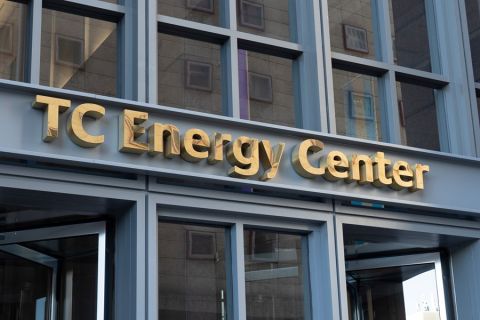It always helps to be more connected. This is true for businesses just as it is for individuals.
The vendor sourcing problem in the oil and gas industry has three parts. First is the problem of discovery. Simply finding vendors can be difficult since some vendors do not have websites, social media accounts or an online advertising presence. Many high-quality vendors are still using traditional marketing techniques that have a shorter radius of influence. As a result, these vendors cannot find new business because they are not being noticed by new operators. Furthermore, operators are continuously limited to their existing vendors and are not capturing the cost and schedule benefits that variety and increased competition provide.
The second part of the vendor sourcing problem has to do with evaluating vendors effectively. Certifications, licenses, equipment availability and manpower are crucial metrics to an operator when considering vendors for a project, and it can be very time-consuming to gather these metrics for comparison. Consequently, qualified vendors miss out on opportunities simply because operators do not have all the information.
Finally, the ultimate problem in the vendor-operator relationship is forming the partnership and executing transactions. Finding the right point of contact at the right office location is important for operators, and finding the project manager or purchaser in charge of the operator’s bid list is important for vendors. Unfortunately, this process is usually not very well organized, and the purchasing-related communications between vendors and operators often get mishandled.
Limitations of other methods
There is a real need for a powerful tool to help oil and gas companies find, evaluate and connect with one another more easily. Traditionally, operators and vendors have relied heavily on word-of-mouth to find each other, but this method of discovery is limited and unreliable. Sourcing vendors through referrals only recycles the vendors within a particular network and does not guarantee that an acceptable vendor will be found for a given project.
Many in the oil and gas industry have realized the limitations of word of mouth sourcing and have turned to conferences and expos to find partners. Industry events are beneficial in that they provide a common meeting place for companies to connect with new and existing partners, but there are significant drawbacks as well. Conferences cost thousands of dollars for exhibitors, travel fees can be substantial and there is no guarantee of new customers at the conclusion of an event.
Cold-calling, either over the phone or by making door-to-door visits, is another option for vendors to find customers, but the associated travel costs and the risk of not connecting with the right point of contact weaken this strategy as well.
The final tool that operators and vendors turn to in hopes of finding each other is the internet. Oil and gas companies attempt to find suitable partners by using search engines and social networks, but there are problems with this approach as well. Search engines were not built specifically for the energy industry, and therefore the information that oil and gas professionals are looking for is often incomplete, outdated or altogether missing. Social networks present a similar problem for oil and gas companies because they were primarily built to connect individuals rather than businesses. Additionally, the vast amount of unrelated content on most social networks makes it cumbersome for oil and gas professionals to effectively navigate to the information they need.
Singular online platform
The Trunkline platform was created to provide a singular online destination for oil and gas companies to connect. The low-cost platform is a powerful industry-specific search engine that is married with a social network, available 24-7 and is as information-rich as possible.
The Trunkline platform enables service companies and suppliers to quickly and easily create a business listing to showcase their companies to new operators. Vendors can differentiate themselves by posting photos, videos and documents. Also, Trunkline allows vendors to develop personalized archives of projects they have worked on as an additional technique for displaying their abilities. For potential customers to connect with them vendors can link to their website, contact information and social media accounts directly on their Trunkline profile. Vendors can track visitors and moderate reviews on their listings. These and other tools included in the platform enable vendors to promote themselves to a wider audience and improve their brand.
The platform is free for operators, who can search for and evaluate vendors based on built-in categories, geographic location, keywords and other parameters. Registered users can rate and review vendor listings and send direct messages to other users within the platform. Trunkline is desktop-friendly and mobile-friendly so that workers in the field can use it just as easily as engineers in the office. Operators achieve instant visibility throughout the energy industry by using Trunkline, and the built-in review system helps identify which vendors are regarded the highest by other operators.
Promoting oil and gas vendors while making it more convenient for operators to accomplish their projects efficiently is Trunkline’s primary objective. Trunkline believes internet technology and social networking will gradually become more powerful in the energy industry, especially as they relate to procurement and vendor relationships.
Joining an industry-specific online community produces benefits for both vendors and operators. Highquality vendors can benefit from increased visibility and new connections. Struggling vendors can benefit from peer reviews, direct customer feedback and a greater awareness of industry trends. Operators can benefit from a larger, more organized and more informationrich collection of qualified vendors.
The effects of social networking in every industry where it has been adopted are extremely positive, and there is no reason why the oil and gas industry cannot also share in those benefits.
Have a story idea for Tech Watch? This feature highlights leading-edge technology that has the potential to eventually address real-life upstream challenges. Submit your story ideas to Group Managing Editor Jo Ann Davy at jdavy@hartenergy.com.
Recommended Reading
BP’s Kate Thomson Promoted to CFO, Joins Board
2024-02-05 - Before becoming BP’s interim CFO in September 2023, Kate Thomson served as senior vice president of finance for production and operations.
Chord Energy Updates Executive Leadership Team
2024-03-07 - Chord Energy announced Michael Lou, Shannon Kinney and Richard Robuck have all been promoted to executive vice president, among other positions.
ConocoPhillips EVP of Strategy, Sustainability, Technology Macklon to Retire
2024-02-16 - Dominic Macklon, who began his career with Conoco in 1991, is set to retire ConocoPhillips May 1.
TC Energy Appoints Sean O’Donnell as Executive VP, CFO
2024-04-03 - Prior to joining TC Energy, O’Donnell worked with Quantum Capital Group for 13 years as an operating partner and served on the firm’s investment committee.
BP Restructures, Reduces Executive Team to 10
2024-04-18 - BP said the organizational changes will reduce duplication and reporting line complexity.





